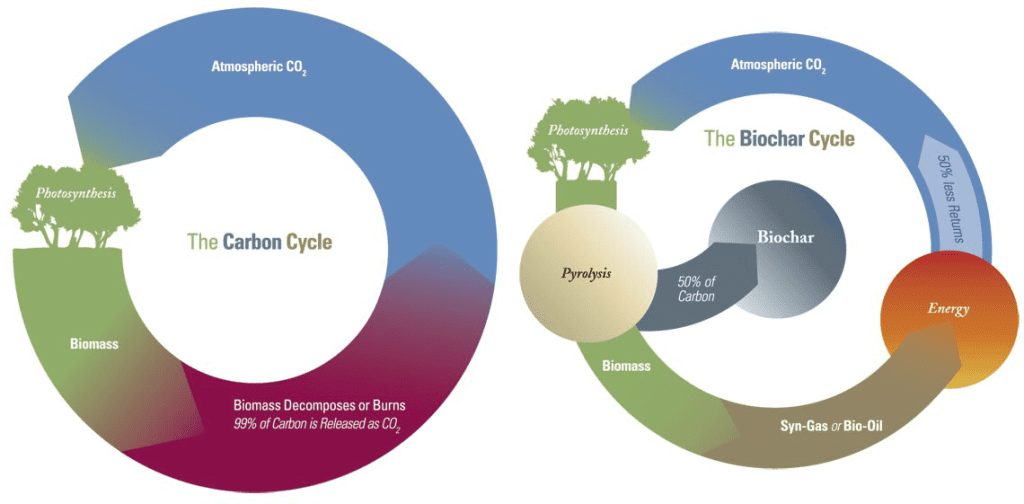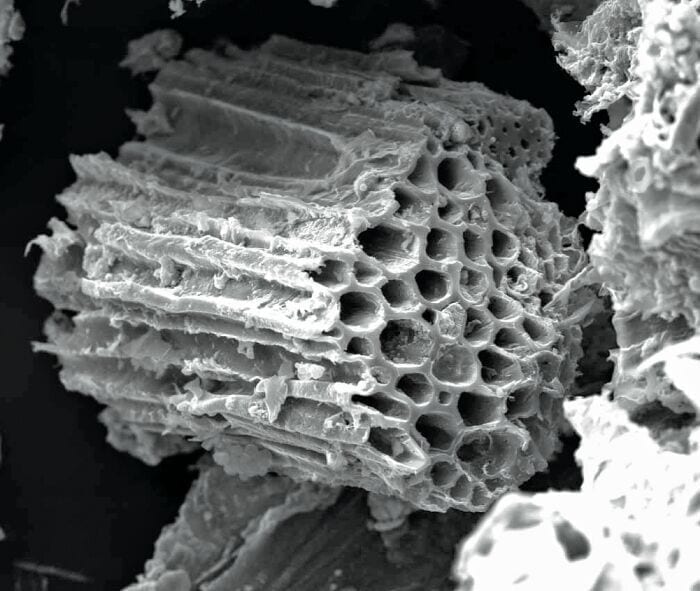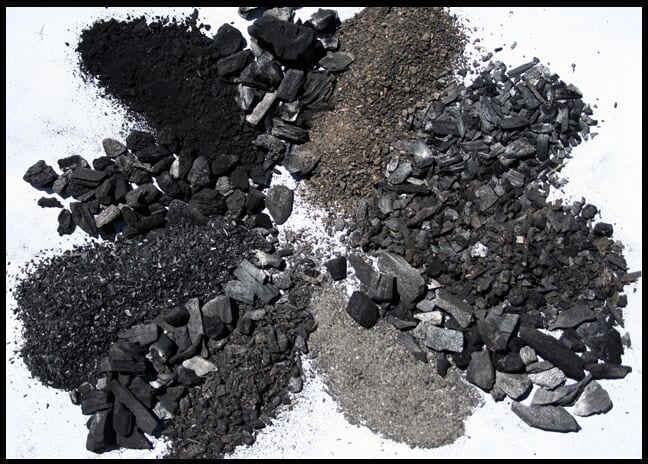by Dr. Hugh McLaughlin and Keegan Pyle
There’s a lot of buzz about biochar these days. And for good reason. Incorporating quality biochar into soil increases the abundance of soil microorganisms, soil nutrient retention and water storage, and soil carbon content.
 Biochar is a relatively new term for charcoal used as a soil additive. However, the idea of incorporating charred matter into soil is centuries old. In fact, this practice resulted in what is now known as terra preta, a dark, fertile soil with high charcoal content that is found in South America’s Amazon Basin. Created thousands of years ago, terra preta soils have shown above-average nutrient levels and better retention of those nutrients yielding high crop productivity.
Biochar is a relatively new term for charcoal used as a soil additive. However, the idea of incorporating charred matter into soil is centuries old. In fact, this practice resulted in what is now known as terra preta, a dark, fertile soil with high charcoal content that is found in South America’s Amazon Basin. Created thousands of years ago, terra preta soils have shown above-average nutrient levels and better retention of those nutrients yielding high crop productivity.
Benefits of Biochar to Plant Growth
Today, biochar is produced through a controlled process called pyrolysis during which waste organic debris like wood chips, manure or leaves is heated in the presence of little or no oxygen. The process produces a carbon-rich material that can be tilled into the soil, ideally combined with compost. NextChar biochar is an extremely porous compound with numerous high-value contributions to growing applications, including:
Increased Soil Organic Matter (SOM). The biochar itself is a form of carbon that lasts thousands of years in the soil, providing a baseline of stable soil carbon. In addition, biochar acts like a condominium for soil biota, as it retains nutrients in the soil, even during heavy rains. This allows the farmer to purchase and apply less fertilizer for years after the biochar has been added to the soil, while receiving ongoing improved yields.

High-quality biochar acts like a sponge, retaining water and nutrients in the soil that a plant’s roots can access.
Increased water use efficiency. Biochar holds water like a sponge, where plant roots can access it. This allows the farmer to use less water, and worry less much about regular precipitation.
Aerated soil. Biochar helps clayey and poorly aggregated soils become less compacted and provide better aeration.
Mitigated toxicity in soil. Biochar reduces pollutants in soils by adsorbing the excess toxicity, immediately reducing their bioavailability, and allowing the soil biota to slowly break the toxic chemicals down or convert them to less toxic forms.
The science of biochar is well-documented by hundreds of scholarly papers, field trials, and in commercial applications. However, because it is not yet regulated, it can be hard to identify high quality biochar. For optimal results as a soil amendment, biochar should have low ash content, minimal volatile organic compounds, high porosity, and high carbon content. Biochar that is made from clean agricultural residues, such as woody material, leaves and grass stalks, is generally very safe for introduction into the soil. Excess ash tends to appear as a gray dust – good biochar will show virtually none of that.

Many variations of biochar are available for purchase. It is important to know the quality of biochar when purchasing.
Adding Biochar to the Soil
There are many ways to incorporate biochar into growing systems. One of the best ways to use biochar in the soil is to mix it with compost, and then either till in into the soil, or top dress it. Good biochar actually accelerates the composting process, making it hotter and faster, because the biochar is benefitting the composting microbes in the same manner it will be benefitting the soil microbes. Any time the soil is accessed is an opportunity to introduce biochar into the growing environment. Small amounts of biochar can transform the soil biology well beyond the simple improvement of water use efficiency, such as applications associated with removing soil toxicity, either due to residual pesticides or plant allelochemicals.
The amount of biochar that should be added to the soil, and how the biochar is added, vary depending on the intended benefit. In general, the benefits are linear up to about 10 volume percent, and additional biochar has diminishing benefits. If the biochar is being added to improve soil aeration, such as for high clay soils, then the biochar should be tilled into the entire soil root zone. For most other benefits, including addition to sandy soils, the biochar can be top-dressed and blended with the upper soil. Over time, the biochar will migrate into the entire root zone. For 5 volume percent, a one-quarter inch deep layer of biochar is worked into the soil, assuming the root zone is 5 inches deep. Ten (10) volume percent equates to starting with a one half inch layer and blending it in. Over time, the biochar will be incorporated into the soil aggregates, especially if the soil has significant microbial activity, as in organic growing systems. A good rule of thumb is one quart of biochar per square foot of soil, so a gallon does four square feet and a cubic foot of biochar will cover 30 square feet.
Additional Resources
- Bartlett Tree Experts, 2012
- Synergisms between Compost and Biochar for Sustainable Soil Amelioration. PDF file. Semi-technical. This article is a good synopsis of the biochar and compost relationship. http://www.biomastec.com/fileadmin/Sonstiges/InTech-Synergisms_between_compost_and_biochar_for_sustainable_soil_amelioration.pdf
- Impacts of biochar additions on soil: microbial processes and nitrogen cycling. This slide-format presentation describes biochar’s role in microbial nutrient and nitrogen cycle including the production of ethylene, which promotes fungal hyphae but inhibits nitrification. PDF file. Semi-Technical. USDA, Agricultural Research Services. http://afrsweb.usda.gov/SP2UserFiles/person/41695/Presentations/Spokas_March2011.pdf
About the Authors

McLaughlin stands in front of NextChar’s BLaK blend – Biochar, Lime and/or limestone, and Potassium.
Dr. Hugh McLaughlin is Chief Technology Officer of NextChar LLC. He is an expert on the properties and production of chars created by pyrolyzing biomass and their subsequent conversion to activated carbons. NextChar uses patent pending technology to manufacture high quality biochar in New England for applications in agriculture, forestry, landscaping, and remediation.
Keegan Pyle is Director of Project Development for NextChar LLC. She has worked over 20 years in the fields of development, communications, and PR.
Each author appearing herein retains original copyright. Right to reproduce or disseminate all material herein, including to Columbia University Library’s CAUSEWAY Project, is otherwise reserved by ELA. Please contact ELA for permission to reprint.
Mention of products is not intended to constitute endorsement. Opinions expressed in this newsletter article do not necessarily represent those of ELA’s directors, staff, or members.

